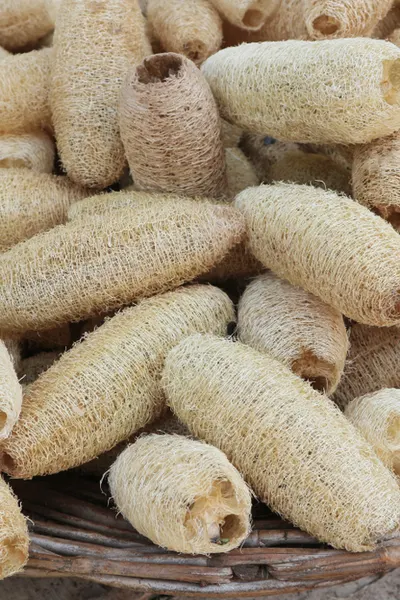It’s not often you can grow a nutritious and tasty vegetable and a great household sponge all at the same time, but that is exactly what you can do when you grow Luffa gourds!
The luffa plant is a member of the gourd family. The same family that includes squash, zucchini, melons and cucumbers as well.
And although it grows and delivers a tasty crop of young gourds just like squash and zucchini plants, it’s actually more well-known for making an incredible sponge.

As it turns out, luffa, (or loofa, luffa, and lufah alternatively spelled sometimes) is quite the versatile vegetable plant.
Not just a food, luffa sponges are also an all-purpose non-abrasive natural sponge perfect for removing dirt. They are great on human skin for sure. But, even better, they are a good choice for scrubbing out dishes, pots and pans too!
How To Grow Luffa Gourds
Luffa plants grow in much the same method and soil conditions as its fellow family member the cucumber. (See: 6 Secrets To Growing Cucumbers)
For starters, that means locating them in a location that receives more sun than not. Growing luffa gourds requires at least 6 to 8 hours of sunlight for plants.

Luffa plants also require loose, fertile and well draining soil for optimum growth. Much like cucumbers and zucchini, luffa plants need a lot of water to fruit.
Plants need to receive at least and inch of water per week. With this in mind, water often when hot, dry conditions persist. Mulching the base of plants with a few inches of straw also helps keep moisture in the root zones of plants.
Support & Fertilization
When growing luffa gourds, plants need support for the vines to sustain the weight of the vegetables. A trellis, fence line, or even an arbor works wondering for providing the necessary support.

Luffa plants can be grown quite well in containers too, so long is there an ability to support the vines with a fence or trellis.
Growing, Maintaining & Harvesting Luffa Gourds
Plants benefit greatly from a few applications of organic fertilizer during the first few months of growth. Apply a light dose of liquid or dry all-purpose fertilizer every 3 to 4 weeks for a total of 3 applications. (Product Link : Jobes Organic Fertilizer)

Luffa plants produce yellow flowers that once pollinated grow into long gourds. Many times, fellow visitors to your garden may even think they are zucchini or cucumbers.
Lufffa are indeed an edible fruit. To harvest as an edible squash, harvest early when luffa are at their most tender stages. Fruits left on the vine to grow, much like zucchini, will become bitter and heavily seeded.
But that can be good if you are looking to “grow” sponges. For sponges, leave the squash on the vine until they mature and turn brown. Next, simply dry for a few weeks to cure.

Once dry, you are ready to create your sponge. Simply peel off the outer skin to expose the coarse, non-abrasive cells for the perfect natural sponge.
Harvest for food when young, and allow a few more to grow into sponges.
One thing is for sure, growing luffa plants will definitely add a little versatility and uniqueness to your garden plan this year!

This Is My Garden is a website dedicated to spreading the love and knowledge of gardening around the world. We publish two new garden articles each week. This article may contain affiliate links.
